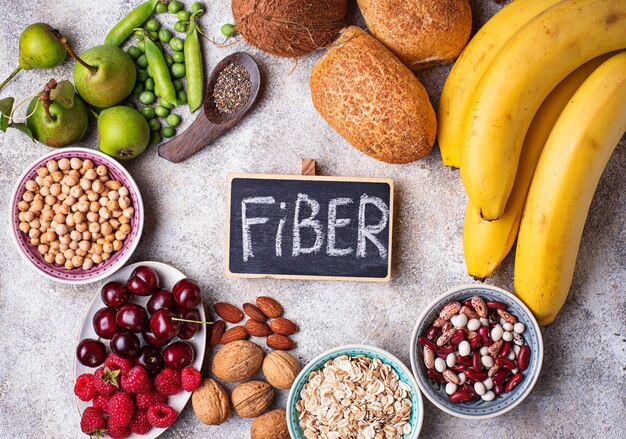Intermittent fasting for weight loss is gaining popularity as a simple and effective way to manage body weight and boost health. Instead of focusing on cutting specific foods, this method involves eating during certain hours and fasting during the rest. By giving the body a break from constant digestion, it helps burn stored fat for energy more efficiently.
Intermittent fasting for weight loss has been around for centuries, originally practiced for religious and survival purposes. Today, scientific studies support its benefits, such as improved metabolism, reduced inflammation, better blood sugar control, and support for long-term fat loss. It also encourages mindful eating and helps break the cycle of unhealthy snacking.
To get the most out of intermittent fasting, healthy habits are essential. In the next parts of this guide, we’ll explain how it works, share different fasting methods, talk about proven benefits and possible difficulties, and give you 8 useful healthy eating tips to make your journey easier and more successful.
What is Intermittent Fasting ?

Intermittent fasting refers to an eating routine that switches between times when you eat and times when you don’t. It’s not about cutting out certain foods or counting calories, but rather focusing on when you eat your meals during the day or week.
This approach does not tell you what kinds of food to eat. Instead, it sets specific time windows for eating and fasting. For example, some people may choose to eat only during an 8-hour period and fast for the remaining 16 hours. Others may fast for an entire day once or twice a week.
During fasting periods, you avoid all foods and drinks that contain calories. You can still drink water, black coffee, or tea without sugar. This break from eating gives your body time to reset and shift its energy use from food to stored fat.
One key benefit of intermittent fasting is that it gives your body time to rest and repair. While fasting, various cellular processes begin that support health, such as improved metabolism and reduced inflammation. This can promote better overall well-being.
Popular IF methods include:
The 16/8 Method: This popular approach to intermittent fasting for weight loss involves fasting for 16 hours and limiting your eating to an 8-hour window each day. For example, you might eat only between 12 p.m. and 8 p.m. This method is easy to follow and fits well into most lifestyles.
The 5:2 Diet: With this plan, you eat normally for five days of the week and significantly reduce your calorie intake to about 500–600 calories on the other two days. These fasting days should not be consecutive. It’s a flexible method of intermittent fasting for weight loss that many find manageable.
Eat-Stop-Eat: This method involves fasting for a full 24 hours once or twice a week. For example, you might fast from dinner one evening to dinner the next. It’s a powerful method of intermittent fasting for weight loss but can be challenging for beginners.
Alternate-Day Fasting: You alternate between fasting days and regular eating days. On fasting days, some versions allow up to 500 calories. This cycle promotes fat loss and makes intermittent fasting for weight loss more structured.
The Warrior Diet: A more intense version, this plan involves fasting for 20 hours and eating one large meal at night. While challenging, it can be effective for those experienced with intermittent fasting for weight loss.
How Intermittent Fasting Helps with Weight Loss
The key to weight loss lies in creating a calorie deficit—burning more calories than you consume. Intermittent fasting helps in several ways:
Reduces Caloric Intake
Intermittent fasting for weight loss works by shortening the time you spend eating each day. This often leads to eating fewer meals and snacks without much effort. As a result, your overall calorie intake naturally goes down. With fewer chances to eat, you’re less likely to overeat or consume extra calories, making intermittent fasting for weight loss a simple and effective approach for many people.
Enhances Hormone Function
Fasting alters hormone levels to facilitate fat burning:
During intermittent fasting for weight loss, insulin levels in the body drop. Lower insulin levels make it easier for the body to access and burn stored fat for energy, which supports fat loss over time.
At the same time, Human Growth Hormone (HGH) levels increase. This hormone plays a key role in burning fat and building lean muscle, making intermittent fasting for weight loss even more effective.
Additionally, the body releases more norepinephrine (also known as noradrenaline) during fasting. This chemical helps boost metabolism, allowing you to burn more calories and fat even while at rest.

Improves Metabolism
One of the benefits of intermittent fasting for weight loss is that it can boost your metabolism. Short-term fasting has been shown to increase the metabolic rate by 3.6% to 14%, which means your body burns more calories even when at rest. This makes it easier to lose weight and maintain energy levels throughout the day.
Cellular Repair and Fat Utilization
Another advantage of intermittent fasting for weight loss is its effect on cellular health. During fasting, the body begins a process called autophagy, where damaged cells are broken down and repaired. At the same time, your body starts using stored fat for energy instead of relying on glucose, which supports consistent fat burning and overall health.
Scientific Evidence Supporting Intermittent Fasting For Weight Loss
Numerous studies support the effectiveness of IF for weight loss:
A 2014 review found that intermittent fasting led to 3–8% weight loss over 3–24 weeks.
It also showed a 4–7% reduction in waist circumference, indicating loss of harmful belly fat.
IF has been linked to improved blood sugar control, lower insulin resistance, reduced inflammation, and better heart health markers.
Benefits Beyond Weight Loss
Besides shedding pounds, intermittent fasting offers various health benefits:

Improved Insulin Sensitivity: Intermittent fasting for weight loss can significantly improve how the body responds to insulin, the hormone responsible for regulating blood sugar. By reducing frequent spikes in blood glucose, intermittent fasting helps stabilize blood sugar levels throughout the day. Over time, this can lower the risk of insulin resistance and decrease the chance of developing type 2 diabetes.
Heart Health: One of the major advantages of intermittent fasting for weight loss is its ability to support cardiovascular health. It can lead to a reduction in LDL (bad) cholesterol, triglyceride levels, and inflammation in the body. Fasting may also help lower blood pressure, all of which are important factors in reducing the risk of heart disease and improving overall heart function.
Brain Function: Intermittent fasting for weight loss may also benefit the brain. It has been shown to increase the production of brain-derived neurotrophic factor (BDNF), a protein that supports brain cell growth, memory, and learning. This can enhance mental clarity and help protect against age-related cognitive decline.
Longevity: Animal studies have shown that intermittent fasting can help extend lifespan by supporting cellular health and reducing oxidative stress. Although more research is needed in humans, the early evidence suggests that intermittent fasting for weight loss may also help people live longer by improving bodily repair processes and reducing age-related damage.
Top Healthy Eating Tips to Support Intermittent Fasting
Fasting alone won’t guarantee weight loss if you overeat or choose unhealthy foods during eating windows. To get the most out of intermittent fasting, follow these 8 expert-backed healthy eating tips:
Break Your Fast with Nutrient-Dense Foods
When practicing intermittent fasting for weight loss, it’s important to begin your eating window with healthy, balanced meals. Focus on foods that include lean proteins, whole grains, healthy fats, and plenty of vegetables. These foods provide lasting energy, help control hunger, and support your body’s nutritional needs after fasting.
Avoid starting your eating period with highly processed or sugary foods. These can cause a quick spike in blood sugar followed by a crash, leading to fatigue and increased cravings. For successful intermittent fasting for weight loss, choose meals that keep your blood sugar stable and help you feel full longer. Making smart food choices during your eating window can improve results and make fasting more manageable.

Best foods to break a fast:
Lean proteins (chicken, eggs, tofu)
Healthy fats (avocados, nuts, olive oil)
Fiber-rich vegetables
Whole grains (quinoa, brown rice)
Stay Hydrated Throughout the Day
During intermittent fasting for weight loss, it’s easy to forget that you’re also missing out on the fluids normally found in food. This can lead to dehydration if you’re not careful. Since staying hydrated is essential for overall health, it’s important to drink enough water throughout the day, even during fasting hours.
Drinking plenty of water not only keeps you hydrated but also helps manage hunger, especially during long fasting periods. It supports digestion, helps flush out toxins, and can improve energy levels. For those following intermittent fasting for weight loss, regular water intake is a simple but powerful habit that supports the body’s natural processes and helps make the fasting experience more effective and comfortable.
Try:
Plain water
Herbal teas (no sugar)
Black coffee (in moderation)
Eat Balanced Meals
For those following intermittent fasting for weight loss, it’s important to focus on balanced meals during the eating window. Each meal should include a mix of macronutrients: protein, healthy fats, and complex carbohydrates. These nutrients work together to support your body’s energy needs and help you stay satisfied for longer.
Protein helps with muscle maintenance and repair, fats provide lasting energy, and complex carbs fuel the body without causing sharp spikes in blood sugar. This combination not only improves how you feel during fasting hours but also reduces cravings and overeating. Including all three macronutrients in your meals makes intermittent fasting for weight loss more effective and sustainable over time.

Example balanced plate:
Grilled salmon
Roasted sweet potatoes
Steamed broccoli
Mixed greens with olive oil
Avoid Sugary and Processed Foods
When practicing intermittent fasting for weight loss, it’s important to be mindful of food choices during your eating window. Highly processed foods, such as sugary snacks, fast food, and packaged meals, can raise insulin levels quickly and lead to energy crashes. They often leave you feeling hungry again soon after eating.
To get the best results from intermittent fasting for weight loss, focus on eating whole, unprocessed foods like fruits, vegetables, lean proteins, whole grains, and healthy fats. These foods support steady blood sugar levels, reduce cravings, and help you feel fuller for longer. Choosing natural, nutrient-rich meals can improve your fasting experience and help you reach your weight loss goals more effectively.
Skip:
Sugary drinks
Packaged snacks
White bread and pastries
Fried or fast food
Include Plenty of Fiber
Fiber plays an important role in intermittent fasting for weight loss. It helps you feel full for longer periods, which can make fasting hours easier to manage. Fiber also supports healthy digestion and keeps your gut functioning well, both of which are important when your eating time is limited.
To boost your fiber intake, include plenty of fruits, vegetables, legumes, and whole grains in your meals. These foods not only provide essential nutrients but also help control hunger and keep your energy steady. Adding fiber-rich foods during your eating window makes intermittent fasting for weight loss more effective by reducing cravings and supporting overall digestive health.

Fiber-rich foods:
Lentils, beans
Berries, apples
Leafy greens
Chia seeds, flaxseeds
Plan Your Meals Ahead
Meal prepping is a helpful strategy for anyone following intermittent fasting for weight loss. By preparing your meals in advance, you make sure that healthy, balanced options are ready as soon as your eating window begins. This saves time and reduces the temptation to grab quick, unhealthy foods when you’re hungry.
Having meals planned ahead also helps maintain a good balance of nutrients, including protein, healthy fats, and complex carbs. It supports better portion control and helps you stay consistent with your health goals. For those using intermittent fasting for weight loss, meal prepping is a simple way to stay organized, avoid impulsive eating, and make each meal count toward your progress.
Meal prep ideas:
Overnight oats
Grilled chicken with veggies
Quinoa bowls
Stir-fry with tofu and brown rice
Sample 16/8 Intermittent Fasting For Weight Loss Meal Plan
| Time | Meal | Menu |
|---|---|---|
| 12:00 p.m. | Break Fast | – Scrambled eggs with spinach and tomatoes – Whole grain toast with avocado – Herbal tea or water |
| 3:00 p.m. | Snack | – Greek yogurt with berries and almonds |
| 6:30 p.m. | Dinner | – Grilled chicken breast – Quinoa and roasted vegetables – Mixed greens salad with olive oil |
| 8:00 p.m. | End of Eating Window | – Water or chamomile tea (no more calories) |
Tips to Make Intermittent Fasting Work for You
Start slow – Begin with 12-hour fasts and work up.
Customize your window – Choose times that suit your lifestyle.
Listen to your body – Fasting isn’t a punishment. Adjust as needed.
Combine with exercise – For best results, include strength training and cardio.
Conclusion

In conclusion, intermittent fasting for weight loss is a powerful and flexible approach that can help improve your health and support long-term weight management. By focusing on when you eat rather than what you eat, this method allows your body time to burn stored fat, balance hormones, and promote better digestion. When paired with nutritious meals, proper hydration, and smart planning, intermittent fasting can become a sustainable lifestyle choice.
Following healthy eating tips—like eating whole foods, including fiber, staying hydrated, and preparing meals in advance—can make your fasting journey smoother and more effective. Whether you choose the 16/8 method, the 5:2 plan, or another approach, consistency is key to seeing results. Remember, the goal is not just to lose weight but also to improve your overall well-being. With commitment and mindful eating, intermittent fasting for weight loss can lead to lasting changes and a healthier lifestyle.
FAQs
- What is intermittent fasting for weight loss ?
Intermittent fasting for weight loss is an eating pattern where you cycle between periods of eating and fasting. It helps reduce calorie intake and improves fat burning. - Can I drink water during fasting hours ?
Yes, you can and should drink water while fasting. Staying hydrated supports digestion, reduces hunger, and helps your body function well. - What foods should I eat when breaking a fast ?
Choose whole, balanced foods like lean proteins, vegetables, whole grains, and healthy fats to break your fast. Avoid sugary or highly processed foods. - Will intermittent fasting slow down my metabolism ?
No, short-term fasting can actually boost your metabolism. However, extremely long fasts without proper nutrition may have negative effects. - Is intermittent fasting safe for everyone ?
While many people benefit from intermittent fasting for weight loss, it may not be suitable for those with certain medical conditions. It’s best to consult a healthcare provider before starting.
